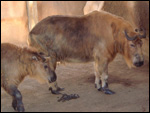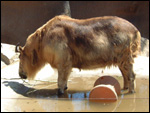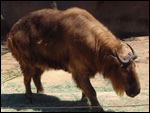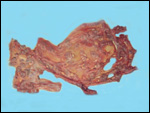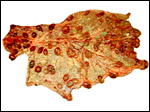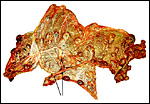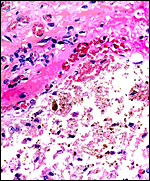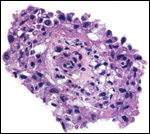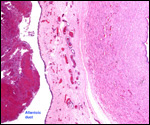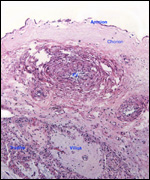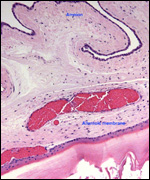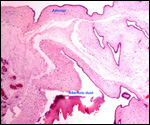| (Clicking
on the thumbnail images below will launch a new window and a larger
version of the thumbnail.) |
| Last
updated: Jan. 29, 2004. |
Budorcas taxicolor
Order: Artiodactyla
Family: Bovidae
1) General zoological data
The takin represents the single species of the genus Budorcas. There are perhaps three subspecies, two of which are being bred at the San Diego Zoo. Much confusion exists concerning the relationship of takins to other bovidae. Budorcas denotes this, as it is best translated as "ox-gazelle" (in German "Rindergemse"), while "takin" is the Tibetan-Burmese name for the animal. "Taxicolor" is derived from badger-colored (Gotch, 1979). The golden takin has been a legendary animal because of its "Golden Fleece". Its taxonomic classification is apparently not yet resolved. This aspect is considered subsequently. The animals come from northeastern Asia, especially Tibet/China. They are stoic, large ox-like animals with shaggy hair and golden to brown color, depending on the subspecies. Despite its deliberate movements, takins are excellent climbers and have surprised us in captivity by nimbly climbing onto the partitions between enclosures. Their closest relative perhaps is the Canadian muskox, but that has been disputed recently (Groves & Shields, 1997). Others consider a relationship to caprinae. Takins weigh about 150-400 kg according to Nowak (1999). They are herbivores and have an apparently important need for salt. They are said to travel far to reach salt licks. The animals live in groups of 10-35 animals (occasionally hundreds) and prefer brush and forested areas.

